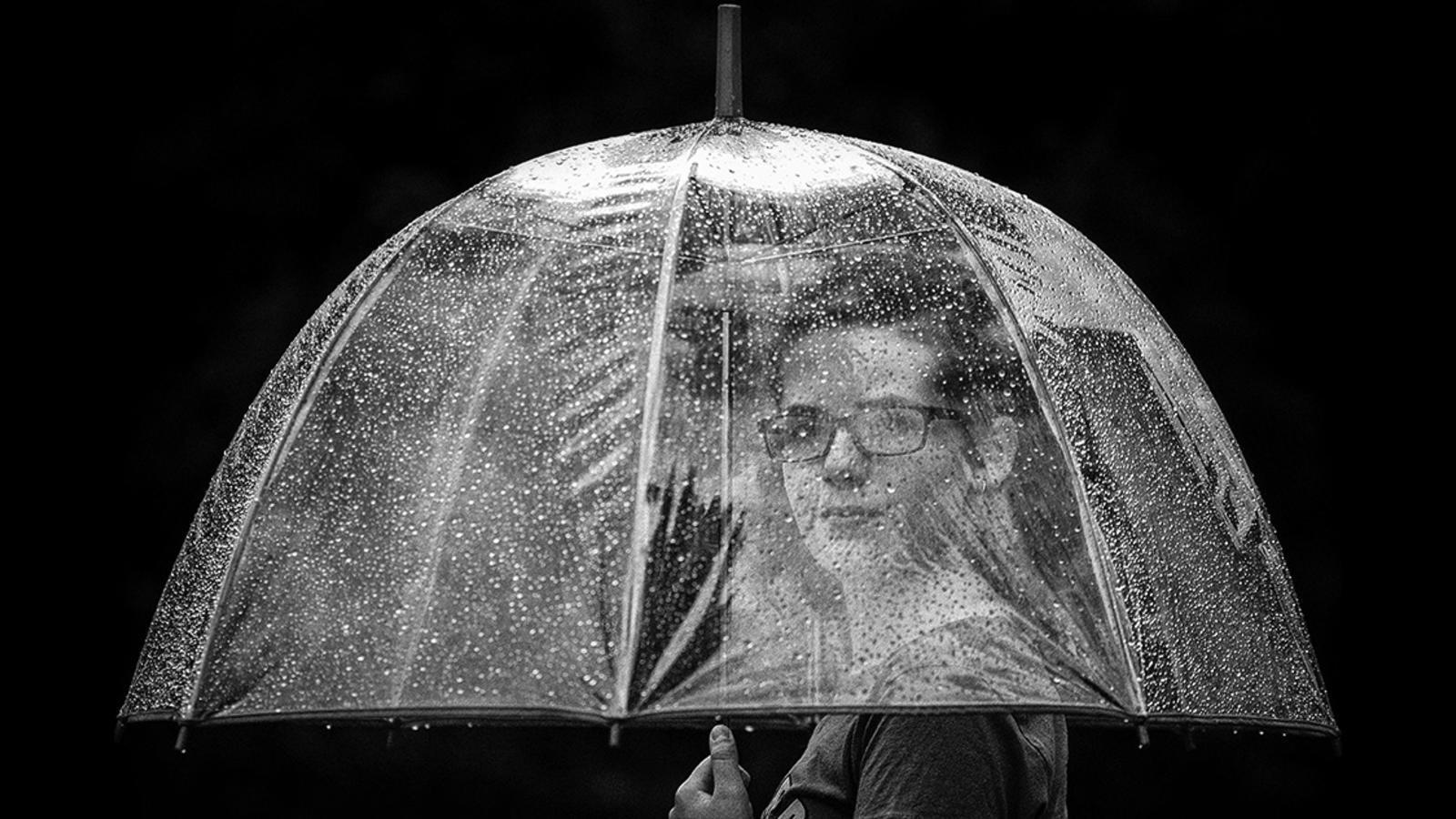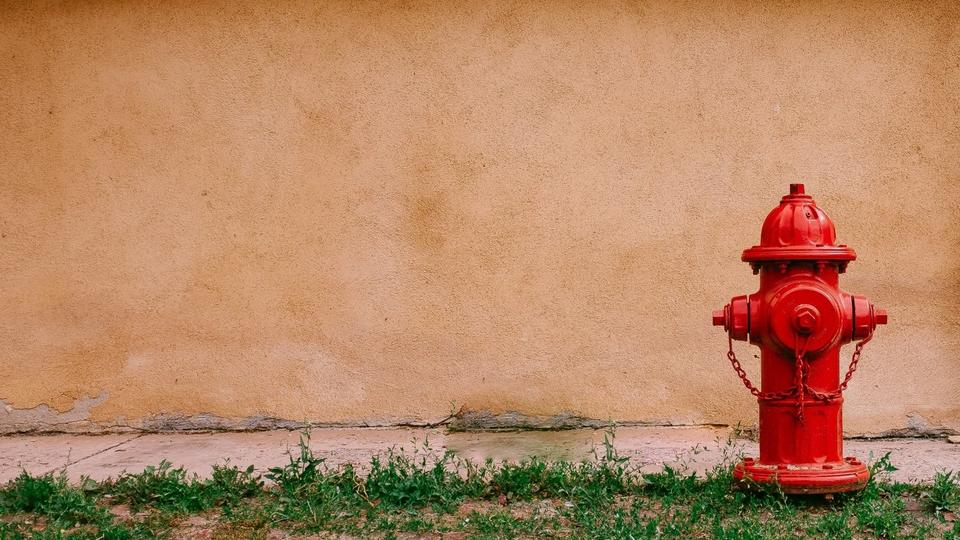
Shelter From The Storm
Thirty-Three Trillion Gallons Of Water Had Just Fallen. How Did Angela Blanchard Organize A Shelter For Thousands In A Single Day?
By Clifford Pugh
Thirty-Three Trillion Gallons Of Water Had Just Fallen. How Did Angela Blanchard Organize A Shelter For Thousands In A Single Day?
With only a few months until her planned departure, Angela Blanchard was looking forward to an informal “Thank You” tour, featuring long appreciation lunches with the colleagues and friends who supported her over 30 years in community development — most recently as CEO of the Houston-based nonprofit BakerRipley.
Then Hurricane Harvey changed her plans.
On the morning of August 29, 2017, Harris County Judge Ed Emmett called Blanchard with an urgent plea. The shelter at Houston’s George R. Brown Convention Center was filled past capacity with residents who’d been forced out of their homes by the hurricane. Another mass shelter needed to be opened immediately. Frustrated by the slow progress of FEMA and the Red Cross, Emmett turned to Blanchard and her staff to get a shelter open at NRG Center.
BakerRipley (formerly Neighborhood Centers) has a long history of helping people recover from disasters. It handled 27,000 new cases after Hurricane Katrina flooded New Orleans in 2005, when evacuees from that city sought safe haven in Houston. But the nonprofit had never managed a shelter of this magnitude — much less have one open and functioning in a few hours.
A friend warned Blanchard she’d be crazy to take on the task, because if things went badly, she would get the blame. But Blanchard, who had helped open George R. Brown to Hurricane Katrina evacuees — along with assisting in long term recovery after floods and fires devastated Australia and visiting shelters for Syrian refugees in Germany — was confident that her team could pull it off.
Still, as the first buses rolled up, just hours after her conversation with Emmett, who was standing by to welcome the evacuees, she thought to herself, “Please, God, let this work as well as we think it will.”
It did. The shelter took in 850 people within the first 60 minutes. For the next month, 8,500 people from 111 cities in southeast Texas and Louisiana called NRG their temporary home.
“They set up a shelter that I really believe is the model the world is going to use,” Emmett says.
---
How did they pull it off? Blanchard believes that having a strong staff with varied talents to draw upon, along with a willingness to improvise, was instrumental. So were the trusting relationships she’d built long before the storm. “A key ingredient was that I trusted Ed. I knew that he wasn’t going to hang me out to dry. I could throw everything I had at it, knowing that we had shared intentions,” she says.
Emmett’s wife, Gwen, is on the board of BakerRipley and is now its chair, so he was familiar with the nonprofit’s work, although he had only known Blanchard for two years. “Your job in the middle of a crisis is to get through the crisis,” Emmett says. “I was confident (Blanchard) was the right person and that organization was the right organization.”
Likewise, BakerRipley had resources Blanchard could rely on in a pinch. “We knew we could call on H-E-B, Chevron and Shell to help, and they did come, along with many others.” she says. “They had worked with us before and they knew what we were doing would be well run. That mutual understanding of capacity and strength was important.”
In a time of crisis, an effective leader is one who gets people to put the welfare of others over their own self-interest, says D. Brent Smith, senior associate dean for executive education and associate professor of management and behavior at the Jones Graduate School of Business at Rice University.
“Good crisis leaders, whether they’re in the military or a corporation or a community organization, are good at getting people to identify personally with them and have trust in the agenda that they’re promoting at the time,” Smith says. “They can get someone to set aside their self-interest for that moment.”
“Obviously, the other attribute that I’m sure assisted Angela is the network of resources and relationships that she has accumulated over time,” Smith adds. “Her social capital was absolutely immense. I guess that’s why Emmett called her.”
---
When Emmett called, Blanchard happened to be on another line with the BakerRipley executive team, assessing the condition of the nonprofit’s various centers. Everyone was working from home, since much of Houston remained underwater.
But when Emmett’s call came, they immediately sprang into action. Former Houston Mayor Annise Parker, an executive vice president of BakerRipley at the time, swung by to pick up Blanchard and they made their way to NRG, where they were joined by the other team members who were able to get there. Those who couldn’t make it worked the phones from their homes to get needed supplies.
“In every organization, you have your thinkers and your planners. You have people who are more deliberative and more reflective. They are vital to any organization. If you don’t have them, you’re rudderless,” Blanchard says. “But you also have those people who will run toward the fire or stay at the hurricane. You have to know who they are because you can drop them into any chaotic situation and they can figure out how to act and how to create some order and response out of it.”
Oriana Garcia, now Baker Ripley’s chief of staff, was a prime example, Blanchard says. “I knew Oriana had experience running really large community events for BakerRipley. She was indispensable when it came to laying out the shelter — all the elements of support. And she was willing.”
People came running toward the fire — or in this case, the flood — from multiple organizations. NRG staff helped Blanchard’s team sketch out a basic layout of the facility, arranging the space to include a welcome check-in area, dormitories (separate areas for single women, seniors, families and single men), a kitchen commissary, a lounge area, a dispensary for clothes and toiletries, and a medical care area, as well as a command center away from the main floor. The plan also included a children’s play site and a pet area, as residents are sometimes reluctant to leave a disaster unless they can bring their pets along. The City of Houston Bureau of Animal Control (BARC) set up cages and Barrio Dogs provided volunteers.
But when Emmett gave them an estimate of how many evacuees to expect, Blanchard realized she still needed more volunteers to get the shelter open.
“I walked into the room and said, ‘I need every single person that’s here to find three more people like you. Call anyone like you,’ ” she recalls. (This turned out not to be a problem. Before long, so many volunteers showed up that they had to be turned away because they outnumbered the residents of the shelter.)
By late afternoon, the shelter was ready to open — except for one major problem. There were no cots. FEMA had promised to supply them, but said they had no drivers to deliver them. So Blanchard and her team got on their phones and called everyone they knew who could possibly help. Aztec Rental came to the rescue, sending over an 18-wheeler full of cots. “They drove into the back bay of NRG, and by that time, we had enough volunteers to unload the cots,” Blanchard says.
---
The NRG shelter was no Ritz-Carlton, but Blanchard made it clear from the beginning that everyone who came to stay would be referred to as “guests” or “neighbors.” “I remember distinctly, painfully, after Katrina when people were mistakenly referred to as ‘refugees’ or ‘survivors,’ ” she says. “These are, in fact, our neighbors. Your neighbors. Mine. And for the time of the shelter, they were guests. I think that terminology matters. Words matter.”
Blanchard’s respectful tone permeated the entire operation, recalls Annise Parker. “The one thing that Angela said that resonated all the way through was that these are not your poor evacuees. They should be treated like guests, and that’s going to be our attitude. We’re not doing you a favor. We’re partners in this,” Parker says. “That makes a huge difference in how they feel coming into the shelter and it set the tone for the thousands of volunteers. That was 100 percent Angela. I was astounded by how much of a difference it makes.”
As the first buses began pulling up after 9 p.m., guests found the set-up much like a hotel. After going through security, arrivals were each met with a hug from a volunteer, who took information and then escorted them to a cot that became their “room” during their stay. More than a third of those who checked in had a medical concern, so they were escorted to the clinic and also to the dispensary for supplies.
By 2 a.m., things had settled down, but Blanchard and her team had another crisis: Where was the food to feed the arrivals when they woke up?
An initial supplier couldn’t make it because of high floodwaters, so the NRG employees pulled out all the food they had, like breakfast bars and packaged snacks. BakerRipley staff began sending out calls for help to companies via Facebook and Twitter.
“The next morning I was staggering around like a zombie and I see (H-E-B Houston president) Scott McClelland walking down this massive hallway. And I knew it was going to be alright,” Blanchard recalls. “I’m always glad to see Scott, but this time, I truly was.”
For the first 38 hours, Blanchard, Parker, and BakerRipley executive vice president Claudia Aguirre (who succeeded Blanchard as the nonprofit’s president and CEO) were constantly monitoring the shelter, with occasional naps. “Until we could get enough people organized into shifts, we didn’t want anything to go wrong,” Blanchard says.
Then, for the next 26 days, until the shelter closed on September 23, Parker and Aguirre co-managed the shelter, each working overlapping 18-hour shifts, with Parker as daytime manager and Aguirre as nighttime manager.
“We had lots and lots of agencies working with us, but decisions were made very quickly,” Parker says. “We had very clear lines of command and a lot of folks with a lot of operational experience on the ground from the beginning.”
The staff and volunteers all wore BakerRipley T-shirts, but Parker soon discovered that visiting police units had trouble figuring out who was in charge. So on the second day, she went home and pulled out one of the polo shirts emblazoned with her name from when she was mayor. She noticed that when she wore it, she commanded more respect.
“That little bit of authority made a huge difference,” Parker says. “In essence, for 30 days we had a small city set up. The only difference in running the city of Houston and (the shelter) is I didn’t have to provide three meals a day for the city of Houston. But you have the same issues, and the most important are safety and public health.”
---
Blanchard finally did retire from BakerRipley at the end of last year. But she’ll continue to make disaster assistance her life’s work because, she says, the disasters are only getting worse — and more frequent.
As the shelter population dwindled down after Hurricane Harvey, the nonprofit switched to long-term recovery efforts. Over the past 11 months, BakerRipley has worked with more than 5,500 households and distributed more than $5.2 million in financial assistance for furniture and appliance replacement, emergency and temporary housing, work-related expenses and medical bills. More than 16,000 households have been helped at the nonprofit’s six Neighborhood Restoration Centers through partnerships with the City of Houston and Harris County.
“We have people out here that are still coming in because they cannot make their way through the convoluted bureaucracies,” Blanchard says. Among them is Houston resident Chanel Caston. After the roof of her southwest Houston apartment caved in, soaking all her possessions, Caston made her way to the NRG shelter with her husband and two children, one of whom has autism. “We didn’t have nothing; only the clothes on our back,” she recalls.
They spent most weekdays at the shelter until it closed, leaving on weekends to be with Caston’s mother at a senior citizen’s facility. “Our condition [at the shelter] was A-1 to me,” Caston says. “It’s nothing like home, but due to the circumstances it was wonderful.”
Now she faces a new set of problems because her housing assistance ran out in July and she pays $975 in rent for a one-bedroom apartment to house her family of four. She travels to several food banks to feed the family and is working with a case manager at BakerRipley to secure other basic needs.
“(Harvey) left me in a predicament,” Caston says. “We’re still trying to get back on our feet.”
But Caston has hope for the future. So does Blanchard. Her experience during Harvey taught her that leaders are not always in front — and that moments of crisis tend to bring out the best in most people.
“There’s no joy in the devastation of a hurricane. It’s heartbreaking,” she says. “But there’s an extraordinary satisfaction that happens after disasters — the pure pleasure of working with people when the mission is compelling, the urgency is clear, and you do whatever it takes. And it’s encouraging to see everyone doing all they can to help one another. The generosity of the human spirit.”
Never Miss A Story


